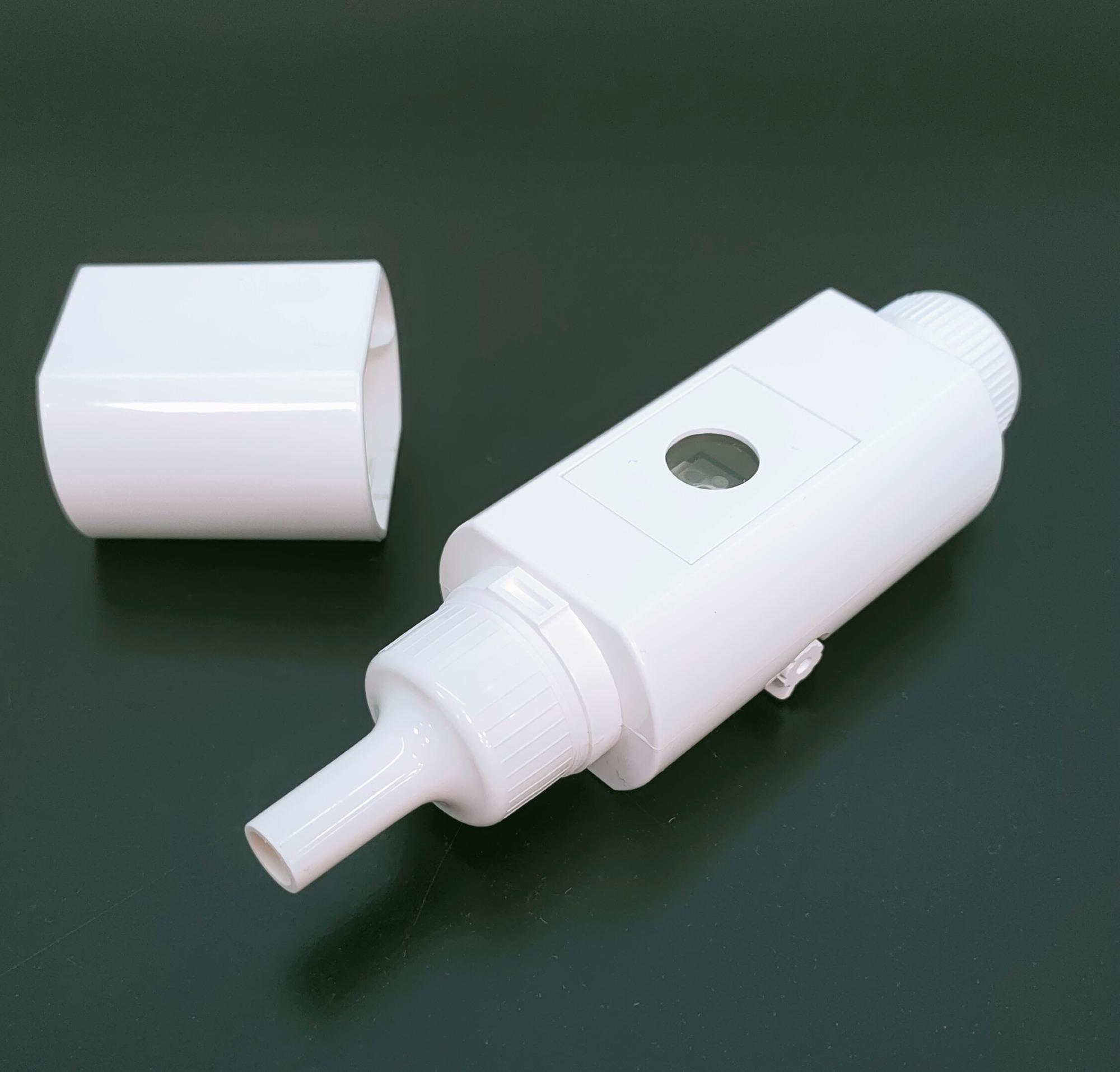Reviewed by Alex SmithFeb 3 2022
Experts feel that bringing an end to the pandemic will need rapid screening of individuals who are attending large gatherings, like weddings and conferences.
 A SERS-based breathalyzer can distinguish volatile organic compounds in the breath of COVID-positive people in less than 5 minutes. Image Credit: Shi Xuan Leong and Yong Xiang Leong, Nanyang Technological University.
A SERS-based breathalyzer can distinguish volatile organic compounds in the breath of COVID-positive people in less than 5 minutes. Image Credit: Shi Xuan Leong and Yong Xiang Leong, Nanyang Technological University.
There is a possibility that asymptomatic people can transmit COVID-19 to others; therefore, it is essential to identify and isolate them until they are no longer infectious.
Scientists reporting in the journal ACS Nano have come up with a prototype called 'breathalyzer' that can sensitively and precisely diagnose COVID-19. This can also be done in asymptomatic individuals, in less than 5 minutes.
At present, the 'gold standard' for COVID-19 testing is a method known as reverse transcription-polymerase chain reaction (RT-PCR). This is slow and needs an uneasy nasopharyngeal swab for sample collection and should be executed in a laboratory.
The rapid antigen test seems to be much faster but has a greater rate of false negatives and positives. Also, researchers have come up with a breathalyzer-type test for COVID-19, which is based on variations in concentrations of volatile organic compounds that are exhaled by those infected with the coronavirus, but mostly require huge and nonportable instruments for analysis.
Xing Yi Ling and collaborators wished to develop a rapid, comfortable, and precise breathalyzer test that would be appropriate for on-site screening of big numbers of people.
The scientists developed a handheld breathalyzer containing a chip with three surface-enhanced Raman scattering (SERS) sensors fixed to silver nanocubes. When a person exhales into the device for 10 seconds, compounds in their breath chemically communicate with the sensors.
The scientists, then load the breathalyzer into a portable Raman spectrometer that characterizes the bound compounds depending on variations to the molecular vibrations of the SERS sensors.
The researchers discovered that Raman spectra from COVID-positive and negative individuals were different in regions responsive to alcohols, ketones, and aldehydes. They are utilized to develop a statistical model for COVID diagnosis.
They tested the breathalyzer on 501 people in airports and hospitals in Singapore, who were indicated by RT-PCR to be positive and symptomatic (8.6%), negative (85.2%), or positive and asymptomatic (6.2%) for the coronavirus.
The technique had a 3.8% false-negative and 0.1% false-positive rate, compared to RT-PCR tests, but it could be completed on-site in just less than 5 minutes. The breathalyzer could one day be a new tool to decrease the silent spread of COVID-19 in communities, stated the scientists.
The authors acknowledge financial support from the National Medical Research Council, Singapore, ASTAR Singapore, the Max Planck Institute-Nanyang Technological University Joint Lab, and Nanyang Technological University.
Journal Reference:
Leong, S. X., et al. (2022) Noninvasive and Point-of-Care Surface-Enhanced Raman Scattering (SERS)-Based Breathalyzer for Mass Screening of Coronavirus Disease 2019 (COVID-19) under 5 min. ACS Nano. doi.org/10.1021/acsnano.1c09371.